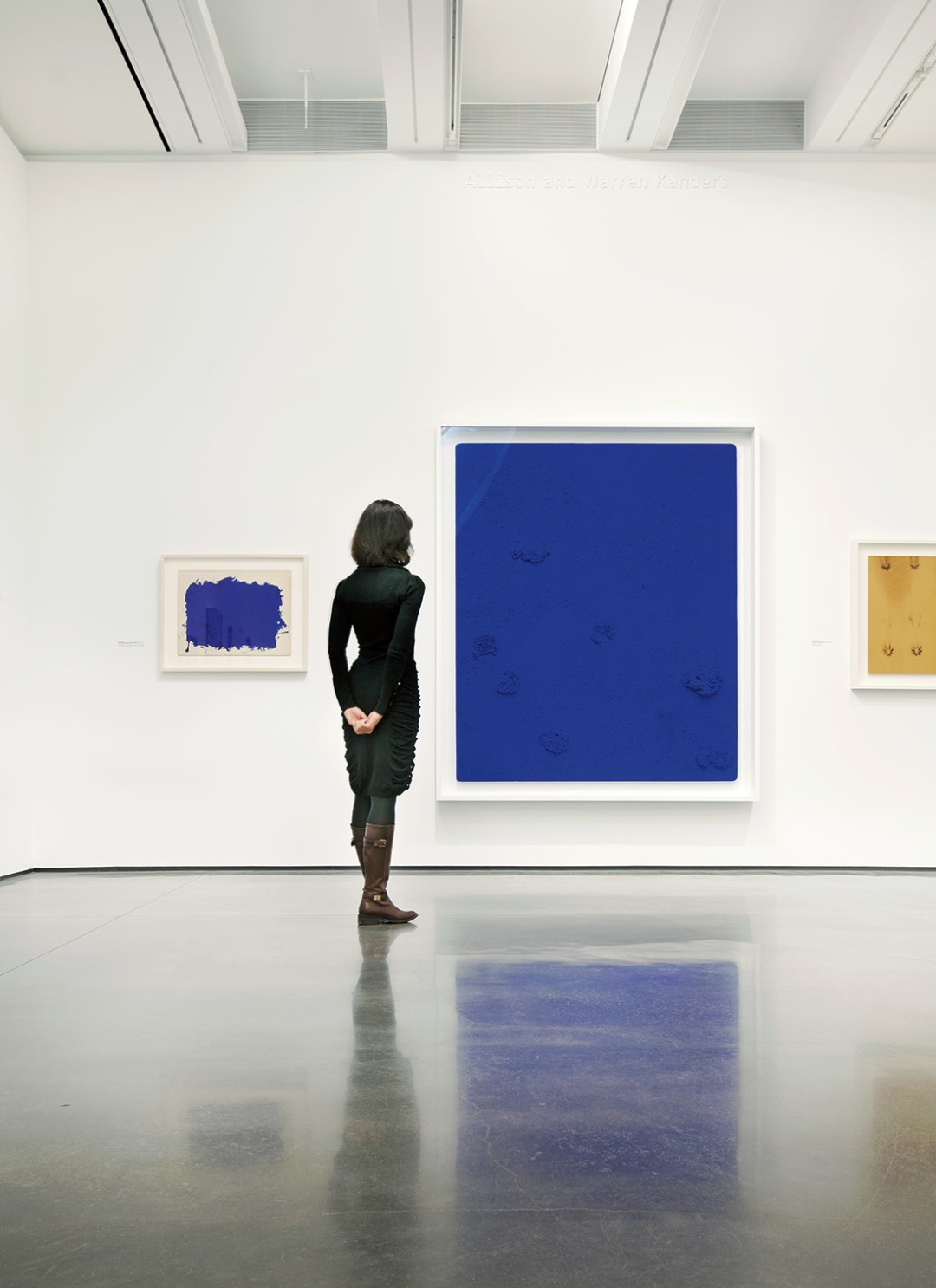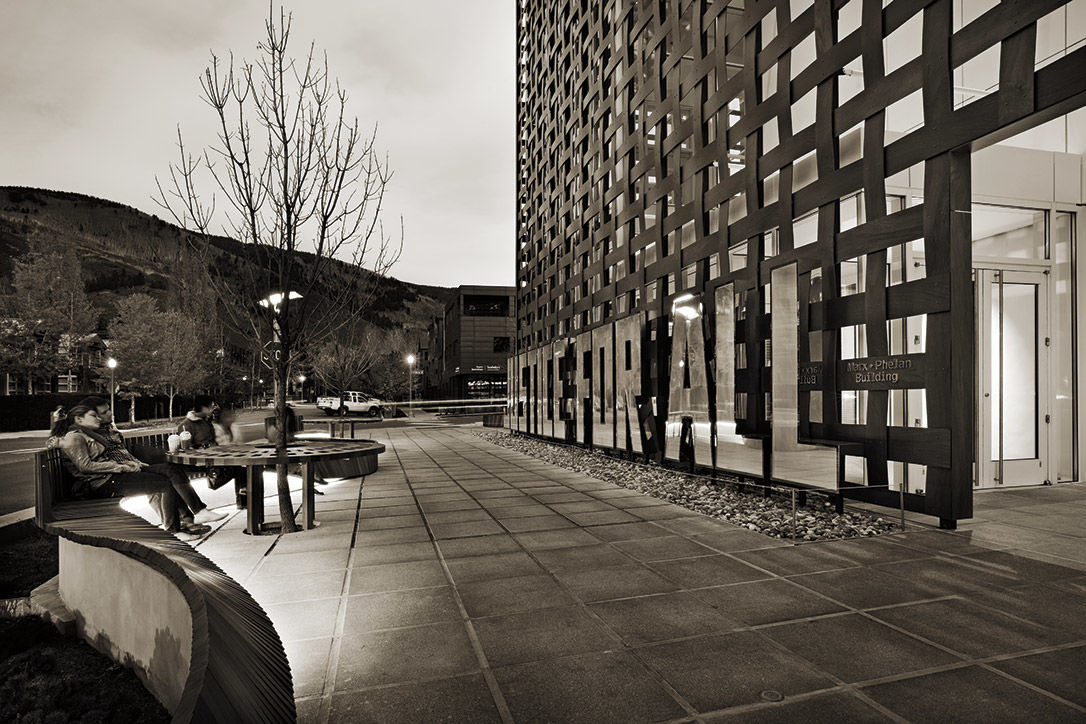
Experience Required

Image: Derek Skalko
When the new Aspen Art Museum opened on August 9, 2014, a narrative that began in 2008 reached its denouement. The plan to move the AAM from its former location—a repurposed power plant by the Roaring Fork River that it had occupied since 1979—was slowed in 2009, when Aspen voters rejected a proposal for a new Shigeru Ban–designed museum on public land adjacent to the Pitkin County Library. But things were back on track by 2011, after the AAM acquired a private parcel at the corner of Hyman Avenue and Spring Street, and Ban designed a different building for the new location.
In March 2014, with the museum’s August opening fast approaching, Ban made international design news by winning the Pritzker Prize for Architecture, his profession’s top lifetime honor. An even bigger global spotlight now shone on the museum, Ban’s first in North America, and combined with ongoing local debate about the project to create a crackling stew of attention leading up to the big day.
The AAM’s members-only opening party on August 2 was exultant, drawing more than a thousand Aspen locals, part-timers, and notable art-industry names from around the world. Then, over the next few weeks, after the space had opened to the general public, things took a turn toward the farcical. “Tortoise-gate” saw a petition go viral demanding the removal of one of the museum’s eight inaugural exhibitions, Moving Ghost Town by Cai Guo-Qiang, because it incorporated African Sulcata tortoises with iPads affixed to their backs. If the new AAM intended to stoke conversation and controversy through art, it was succeeding to almost Mapplethorpian proportions.
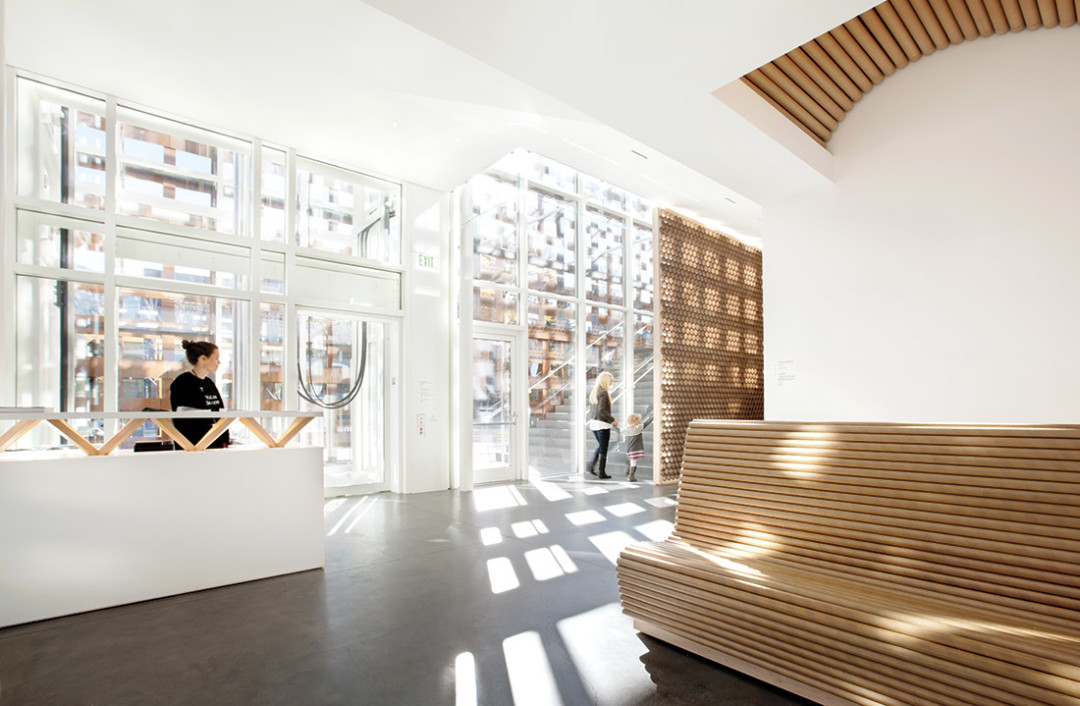
But then, slowly and steadily, a counternarrative began to emerge. The bustle of high season waned, the caterwauling quieted down, and Aspen was left with an art museum that started to function and feel like, well, an art museum. Tourists streamed in every day, locals began to eat lunch and evening snacks at the rooftop café, art buffs drove from Denver and even further afield to see the exhibitions, and parents spent hours enjoying the space with their children. Within fewer than two months of opening, the new AAM saw 23,000 visitors, nearly as many as it received at its old location in an entire typical year. Admission is free, and beyond the art on display in the six gallery spaces, programming has included lectures, live music, free art classes, and free movies.
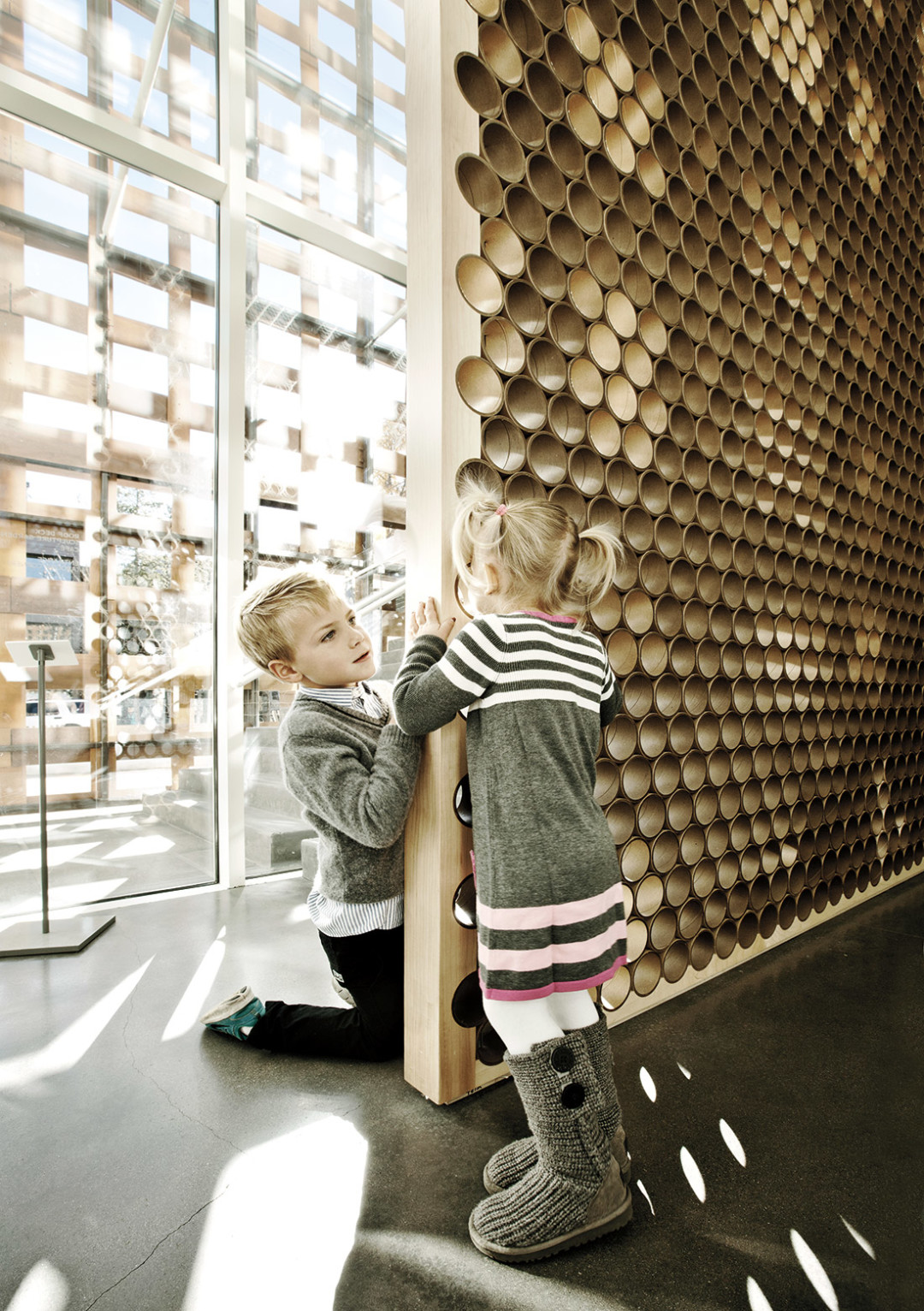
Entering the building brings immediate hallmarks of Ban’s work: an emphasis on natural light and the use of unconventional materials. Most dramatically in the morning, light pours into the AAM through the woven exterior façade and glass windows of the building’s east-facing wall. As Ban told this magazine in November 2013, “Natural light and cross ventilation are most important for comfort,” adding that the design truism applies to everything he builds: “Comfortable spaces make people happy whether they are expensive or not.”
The new AAM was indeed expensive, costing nearly $45 million, paid for by private donor contributions. But Ban still used a material—the cardboard seen here as walls, a bench, and a ceiling arch—that is standard for the budget-minded shelters he builds for victims of natural disasters. In addition to introducing a softer, more playful material to a building with a lot of gray concrete and white paint, the cardboard-tube walls allow for the transference and diffusion of light, an effect achieved by other materials and techniques throughout the building.
The tubes’ cylindrical shapes are echoed in the ceiling beam above the rooftop terrace, where stepping into the outdoor sculpture garden feels wholly natural, given how Ban has brought the outside in through much of the building’s translucence. The sculpture seen at right, a large cement squash, is half of Florian and Kevin by Sarah Lucas, on display until January 25.
Parallel staircases connect the building’s three aboveground floors. One is open to the elements, sandwiched between the building’s woven exterior and a glass wall encasing the east side. An interior staircase rises on the other side of the glass.

The view from near the top of the exterior stairs brings almost all of Ban’s materials and visual ideas into play: to the right, there is the building’s basketlike shell, made of paper encased in a wood veneer; the concrete staircase itself runs up the middle, separated from the interior staircase by the glass wall; white window frames and beams add more lines to the composition; and wave-like wooden trusses, which appear both here and above the rooftop café, create a sense of movement in the ceiling.
The photo at left was taken early morning in late October, when almost all of the elements threw a shadow or carried a reflection. The effect is kaleidoscopic, and while almost dizzyingly Escher-like here, the staircases, particularly the wider exterior one, make for very comfortable spaces, inviting lingering and interaction, both with the space and with other people.
In the Gallery 1 Lounge, the nook pictured above, the woven exterior still diffuses light, but its grid also creates a series of picture frames for various points in town, whether elements of Aspen’s built landscape, Red Mountain looming above, or clouds in the sky. Time in the nook also brings an interesting dichotomy of the museum to bear: while it can appear fortress-like, even forbidding, when seen from the outside, the boxy shell becomes protective and comforting when viewed from within.

At night, a structure built to let natural light in during the day becomes one that emits light, glowing like a magical treasure chest. The effect is most apparent when the museum’s exterior is viewed from afar, but even the skylights on the rooftop terrace, as seen at right above, get in on the incandescence act.
The most frequent criticism leveled against the new museum is that it is too big. While its impact on Aspen’s built landscape can be debated, the museum’s scale certainly transforms how it is able to present art.
All museums benefit from duration of experience. That’s particularly true for museums exhibiting contemporary art, which can provoke a snap assessment and dismissal by the casual viewer, of which there will be many wandering in off the streets of Aspen.
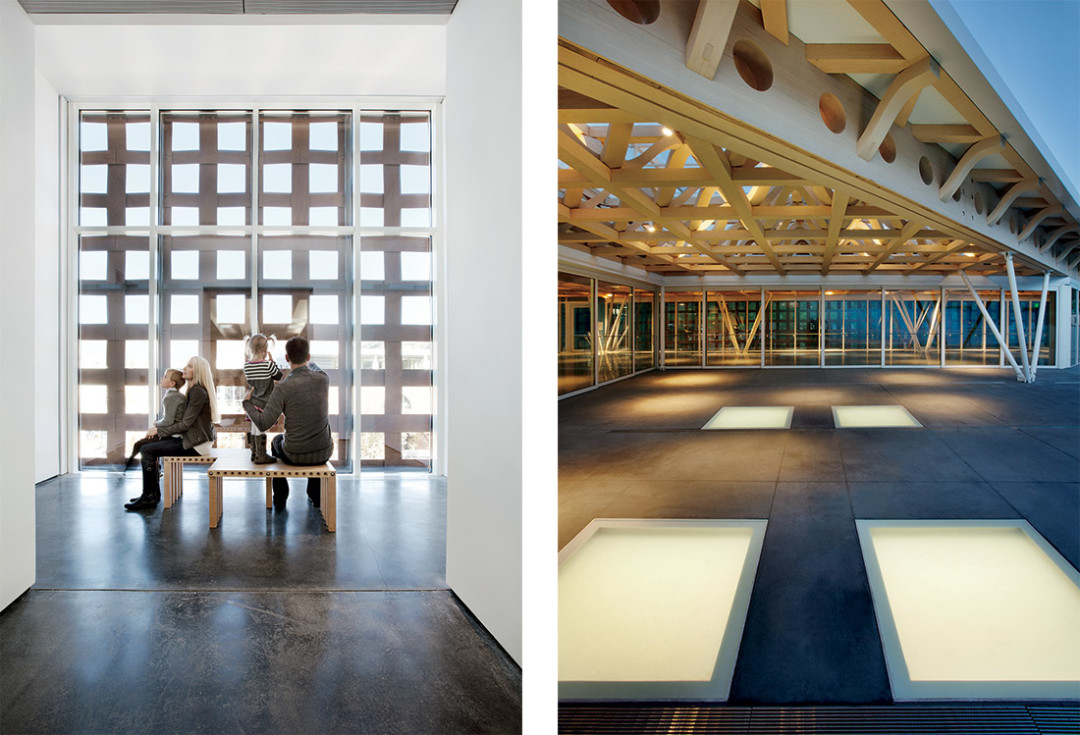
In a smaller space, an observer of Lutz Bacher’s How Will I Find You, the pile of plaster molds and casts pictured above and on display until January 25, might feel crowded by the work or by the presence of other museums guests. But the 4,000 square feet of Gallery 1 allows for a viewing paced more by the onlooker’s terms than by the art’s. A viewer can break away from the experience and engage with Knots, the twenty-nine Lutz Bacher drawings hanging on the Gallery 1’s walls, then return to it.

And that’s just in one gallery. There are six total. Gallery 2 is 2,500 square feet; Gallery 5 is 2,000; and the smaller spaces—Gallery 4 at 1,400 square feet, Gallery 3 at 1,200, and Gallery 6 at 500—while more intimate individually, cumulatively allow for a museum experience that can last for hours. Architecturally, one way in which Ban facilitates circulation between the galleries is through his use of frosted glass floor panels leading to glass doors, as seen in the transition between Galleries 3 and 2 at left.
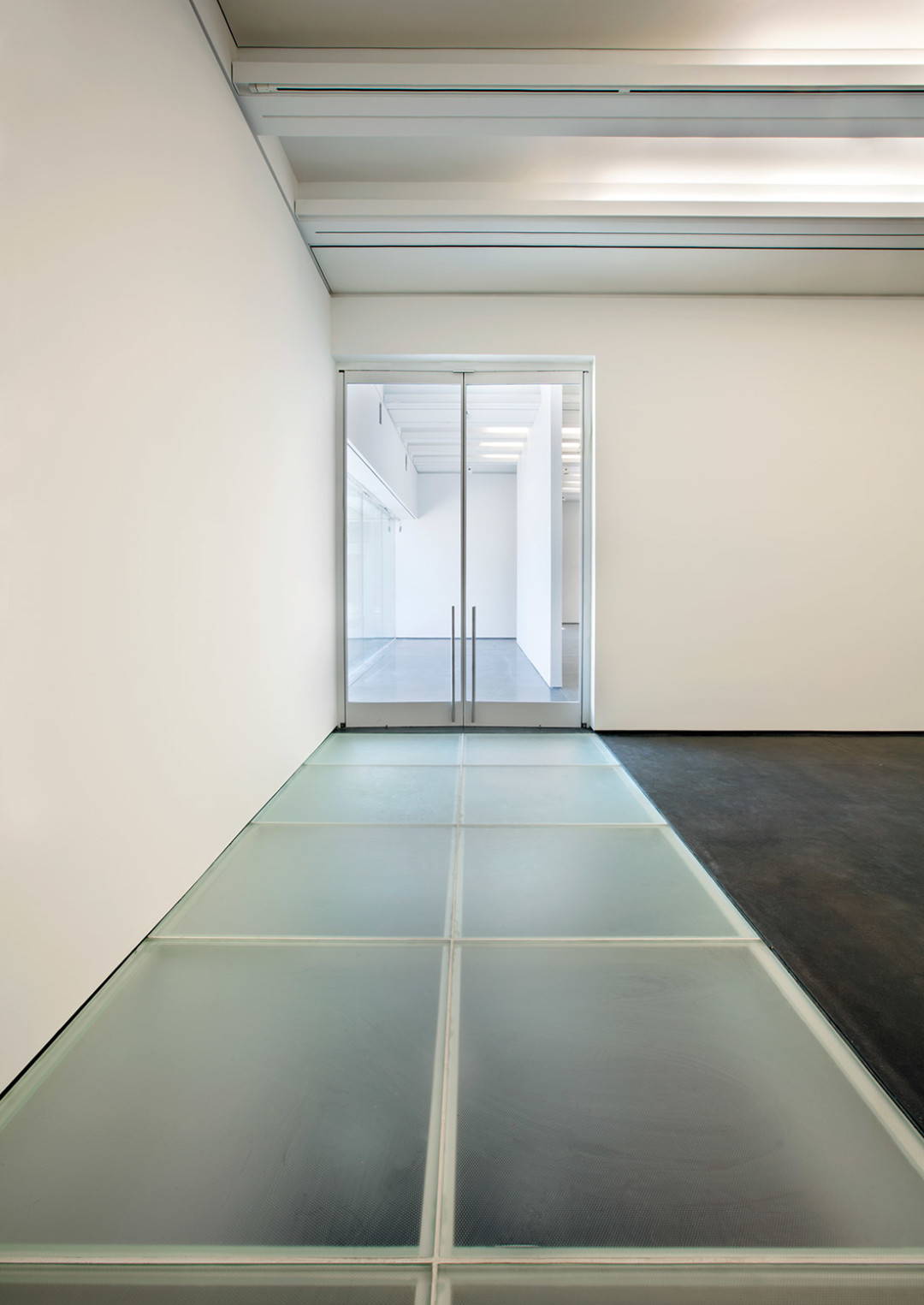
Of course, a moment spent with a single work of art can be just as memorable as an hours-long, multiple-gallery visit. David Hammons Yves Klein / Yves Klein David Hammons, displayed from the museum’s opening until November 30, paired the two artists in an exhibition that generated art-world buzz from Aspen to both coasts. New York critics and Denver art bloggers circled the show’s dates on their calendars, but many more—literally thousands more—tourists and Aspen locals who knew nothing of either artist engaged with the experience, too. They passed in front of Yves Klein’s IKB 26, his Untitled Blue Sponge Relief (RE 40), and his Peinture de feu sans titre, seen from left to right here, and perhaps took a moment to pause.
More than from the surprising combination of artists, more than from what Art Forum thought of the show, more than from the ample space it inhabited—filling both Galleries 2 and 3—the Klein and Hammons exhibition derived its impact from the Aspen Art Museum’s new location in the heart of town. In a matter of minutes, a sixty-year-old ski bum and a sixteen-year-old out-of-towner could find themselves briefly mesmerized by such a deep shade of blue and think, Cool.
